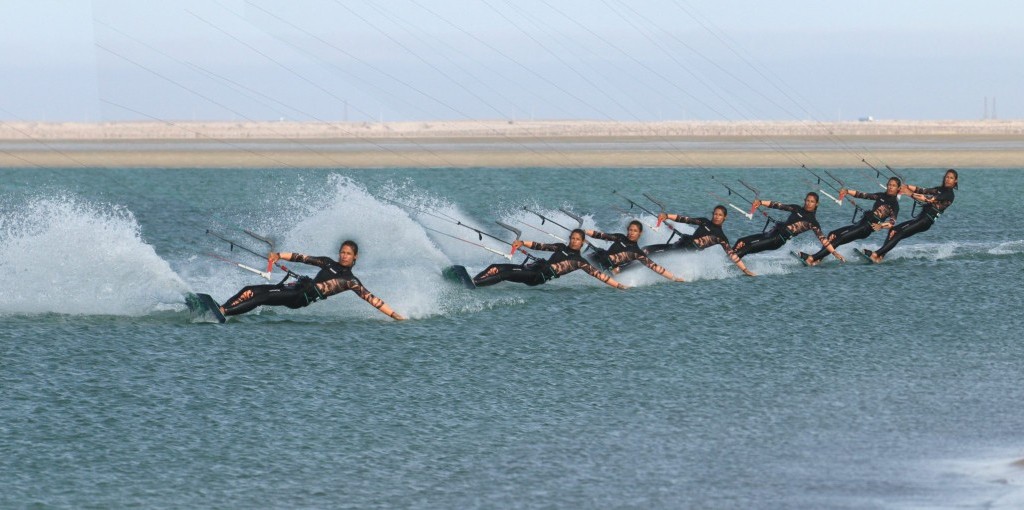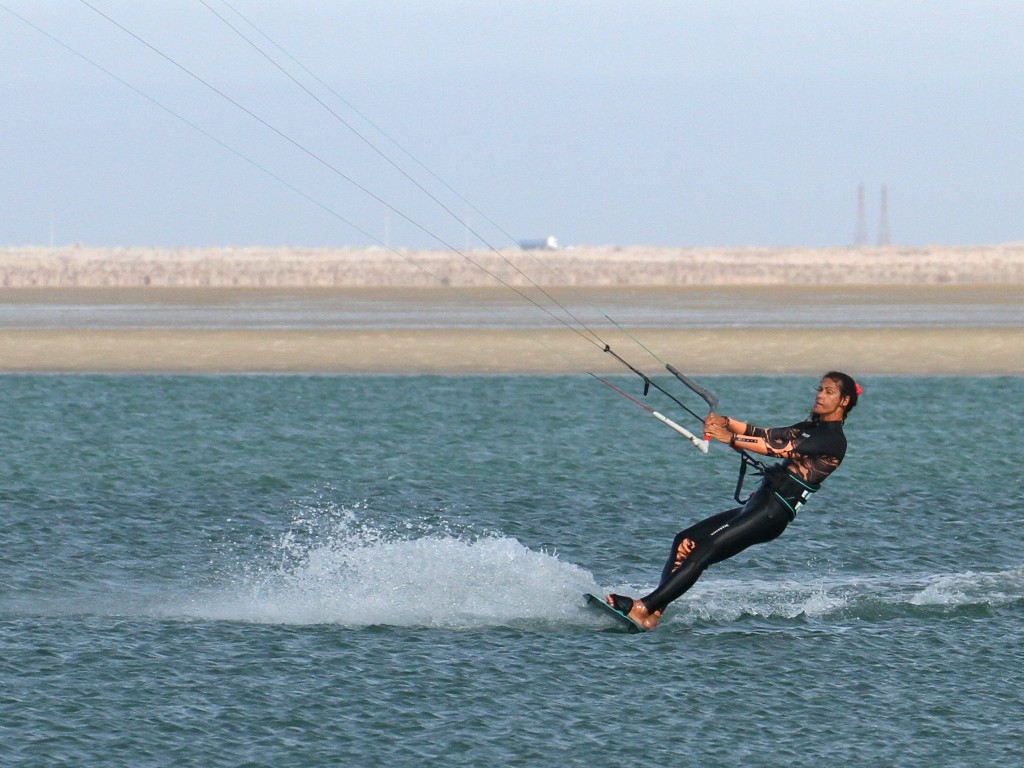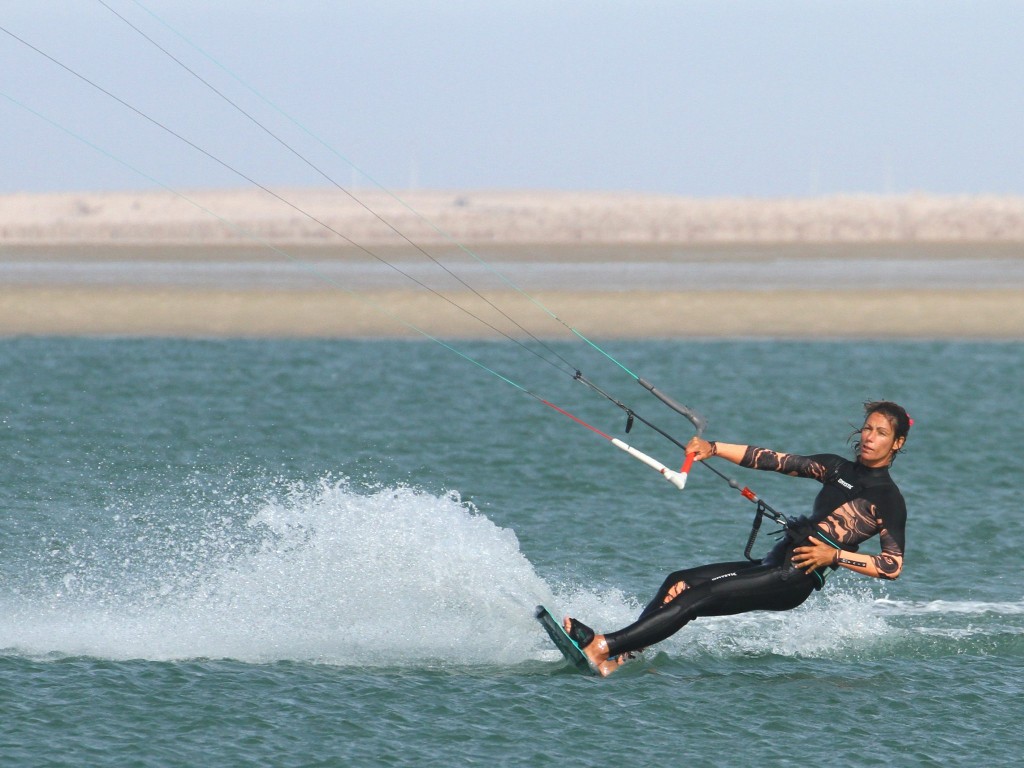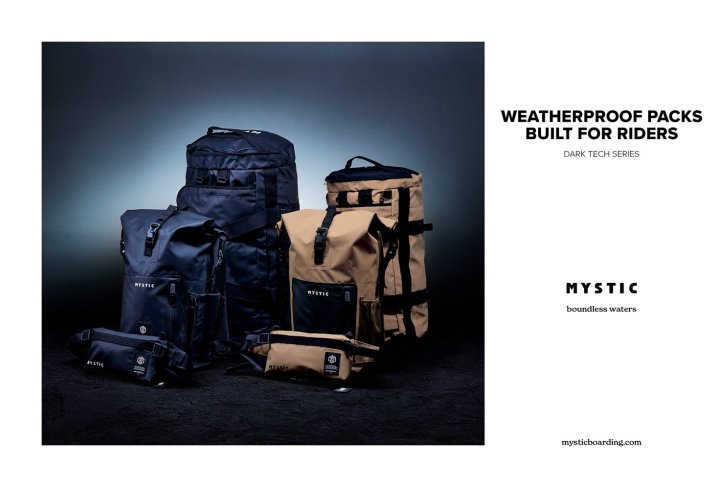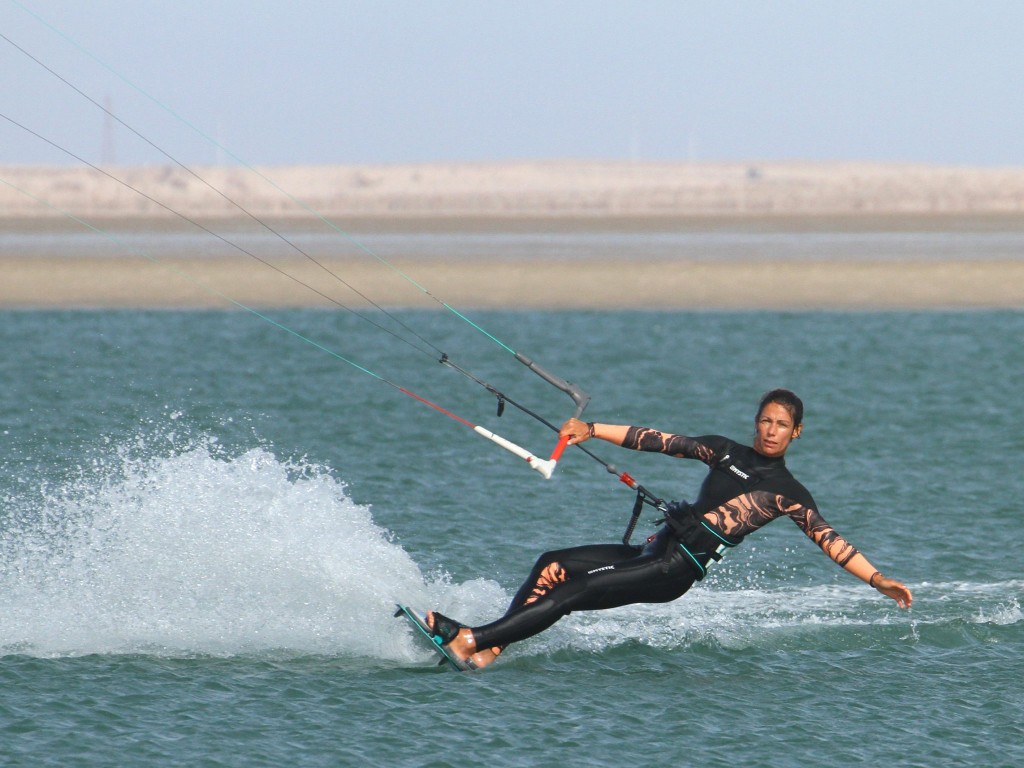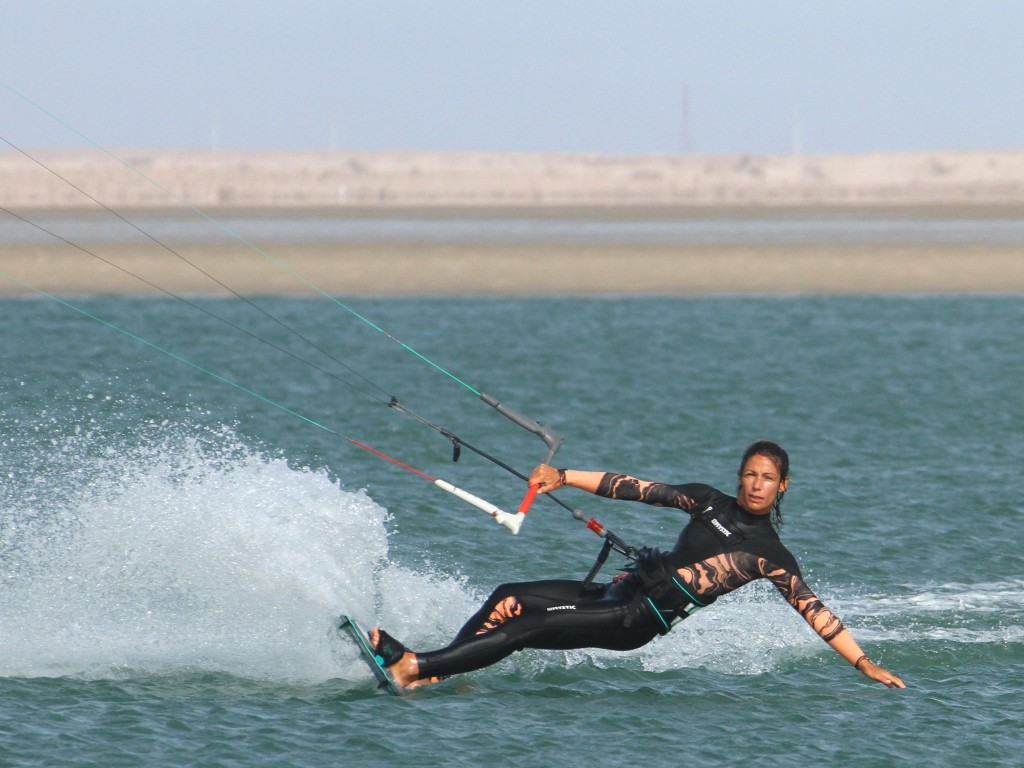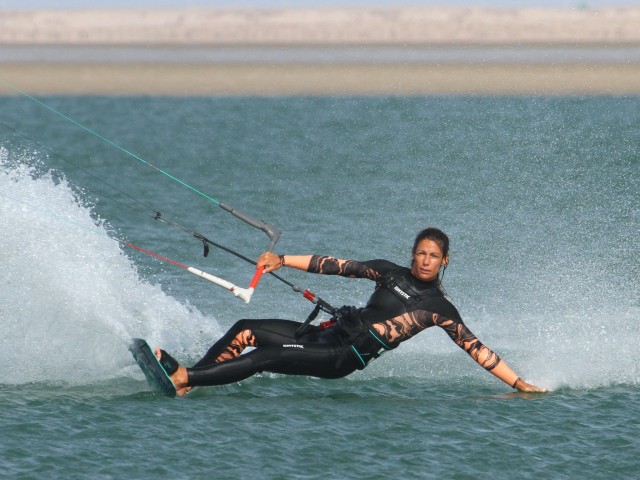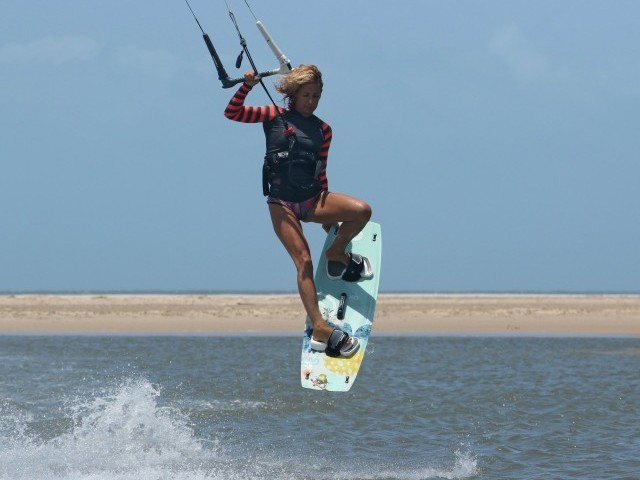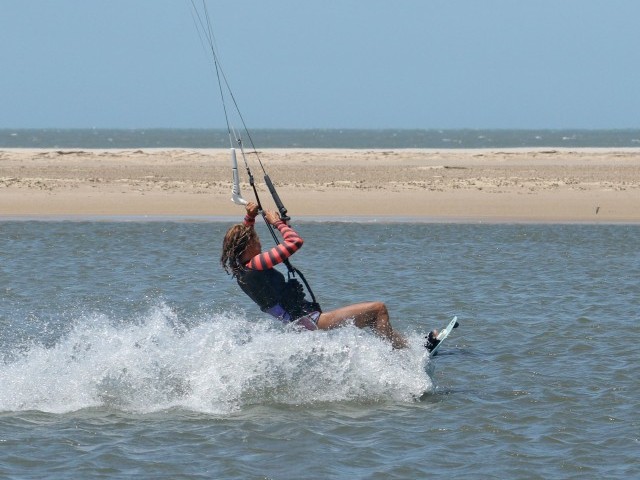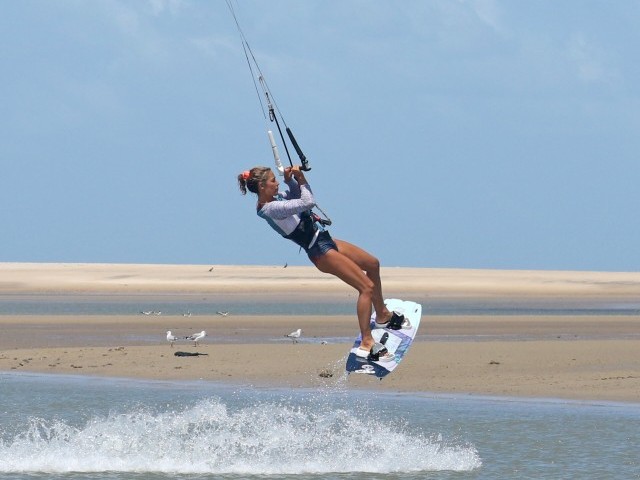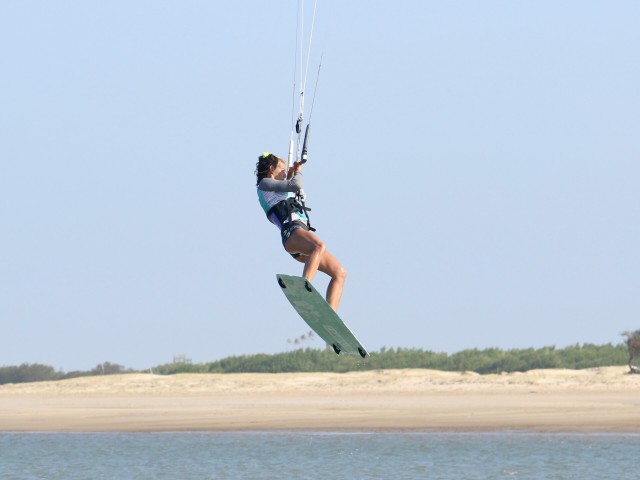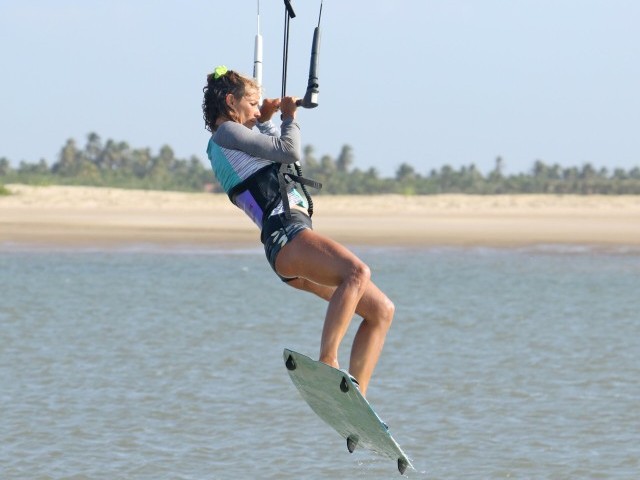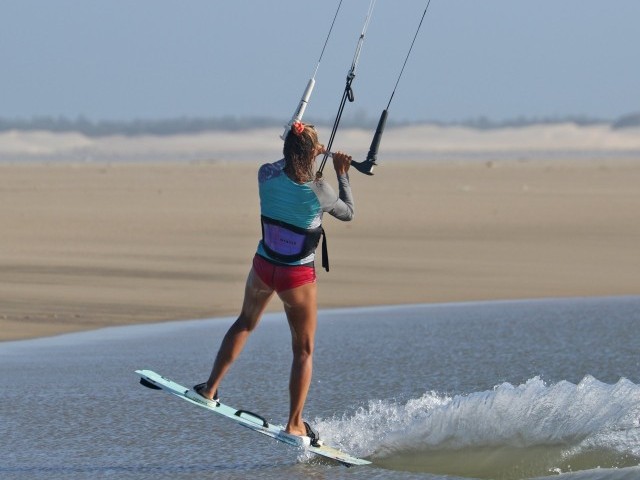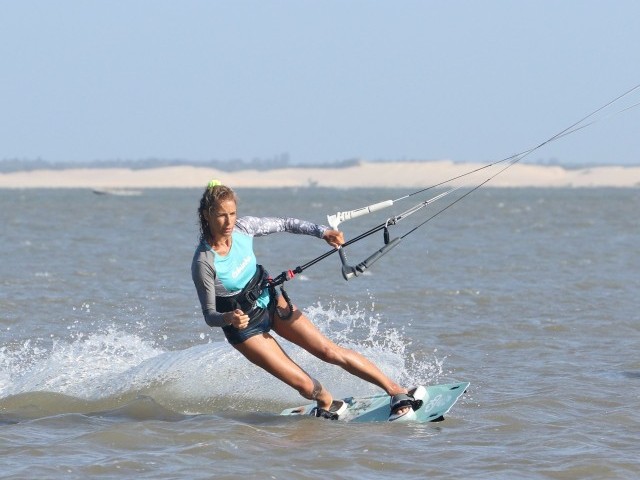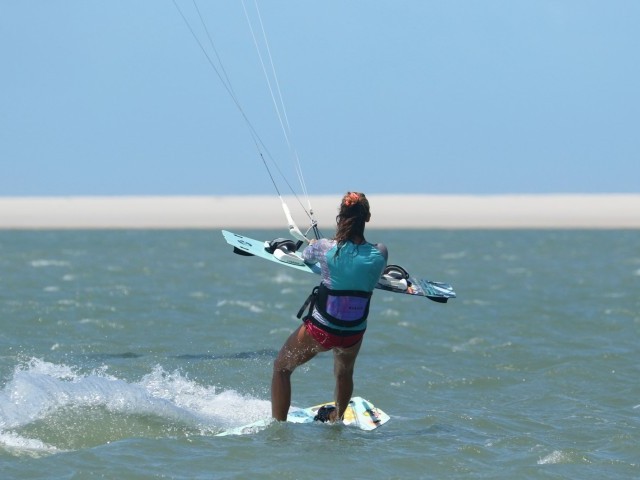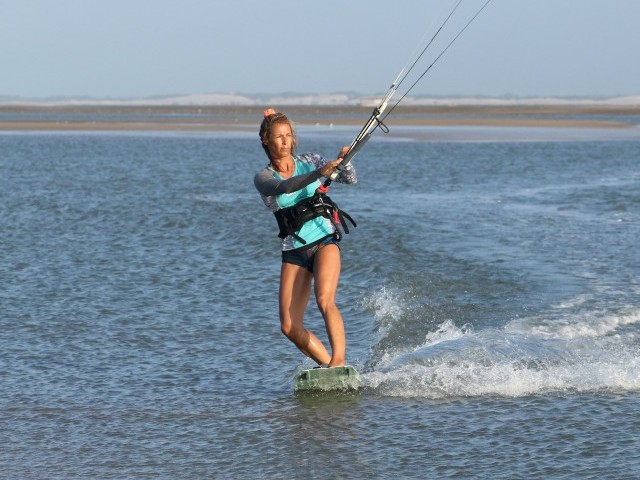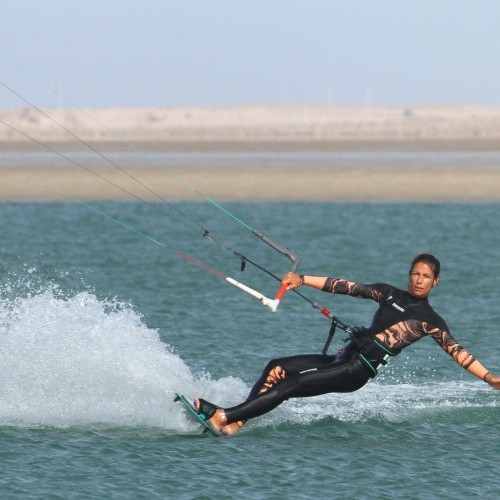
Heelside Hand Drag
Technique / Beginner
Introduction
We thought we'd start this edition with a bit of simplistic, or so it would seem style. Elegantly stroking the water, followed by a plume of spray, was one of the original kiting money shots, and one that is still oft revered and pulled out the bag by many a guest on our clinics. However, as has been the experience of many a camera loving, kite flying, water-sports enthusiast, it isn't quite as simple as first meets the eye. Hopefully in time for your holiday snaps, without some poor family member having to spend freezing hours in the shallows, here is a helpful little how-to for that laid back of all shots.
So, what's involved? What you'll be practising is getting yourself low to the water, while keeping control of your kite and maintaining power, while still riding in a straight line without losing your speed. This then lends itself quite perfectly to some playful water stroking.
The Set-Up Pic A.
To get yourself ready for some low riding, you'll need power in your kite. Trying to stroke for miles while working your kite is not a match made in heaven, so best leave this for a session when you can enter the realms of park and ride kiting. You'll also need to set your sweet spot somewhere towards the middle of your throw, although this is arm's length dependant. Suffice to say you don't want your sweet spot butted up against the bar! Flatwater is your friend, as without the constant annoyance and breaking effect of chop, your board will be much happier cruising along. You'll need some space downwind of you, as you'll be flying your kite a tad lower, and finally, if you have a camera person set up in front of you, you'll have more than enough motivation to drop the clutch and give it a go. Karine is approaching the camera, her kite is just above the 45-degree mark, she's powered up, and importantly she's edging but not massively hard, just holding an upwind course, with plenty still left in the tank.
Derriere Down Pic B.
Next on the list is getting low and dropping your bum down near the water. This is your aim. Don't worry about reaching down; first, get your arse down low. Now when we say low, we don't mean bending your legs and squatting down, what we mean is getting into that canoe position, or sitting in a racing car, where your legs are outstretched, while your body is upright. To do this, you need to have your weight relatively centred, so that your back leg is fairly extended. This will keep you away from the board and is quite the opposite of squatting. The other mahusive advantage of this position is that you will keep most of the board's edge in the water, from tail to front fin. This way, you'll be riding on the flatter planning area, and you'll be less likely to slow down. Keeping your kite low, with hands centred on the bar you can push the bar gently out a smidgen while edging. You should find that this lowers you towards the water, and at the same time encourages you onto a stronger edge. If your sweet spot is set a bit further away, you'll need to release your front hand to achieve this, just like Karine in the picture.
Open Shoulders Pic C.
With your front hand off the bar, you can now reach forwards, not down, opening your shoulders so that your chest faces the direction of travel. This will help keep your weight balanced on the board and prevent you from leaning back towards the tail, which will carve the board up and stop you in your tracks. With your hand off, you now have the task of balancing edge against power. With your kite low and your bar slightly out, your kite will be towards the edge of the window, and you should be bombing upwind. The beauty here is that if you pull the bar in, without the kite moving up, then it will fall slightly back, downwind of you and pull harder. You need to play with this feathering action, seeing how much you can push with your legs and how much you can pull on the bar — too much of either, or not enough and you'll stall and get wet. As you get used to this, you'll find that you'll be comfy for long rides, and it is even possible to move the kite by using your wrist as you would when body dragging. You can see that Karine has a decent edge, her bar is out on the sweet spot and she's resisting with her legs.
Shoulder Dip Pic D.
Now that you're in control and riding low, you can drop your front shoulder down towards the water. With your shoulder lower, you can edge even harder, and as such, you can also start to lean the body back so that you're not so much broken at the waist. This looks like you're pushing the hips up, but actually, you're pushing everything away from the kite, straightening from your canoe position. Here you can take lots of power, controlling both the board and the kite. You can see how Karine has pushed her back leg away and is dropping her front shoulder.
The Money Shot Pic E.
And from such a comfortable position it's simply a matter of putting your hand down onto the water for the most stylish of caresses:) Riding low like this you will need to keep plenty of tension in the lines to support you, and power in the kite as you'll be edging hard. Keep looking forward and get the shot...
Top Tips
To be honest, this is as much about confidence and trusting yourself while not looking at the kite as it is about lining up the rest. Build up to this by riding one-handed not so low, then try getting lower with two hands and finally low with just the one.
It's also worth trying to ride around with your kite lower than usual, as this with give you a feeling for the edge which you can apply when the kite is pulling against you, rather than trying to lift you.
To sum this move up, it is the fact that by edging you are being kept up by allowing all the kite's power to push back against your board, so the board is holding you, rather than using the kite to support you and hold you up from above.
If the worse comes to the worse just let the bar out and you'll sit gently into the drink.
Now have a gander at the sequence and videos to see the step by step guide.
Common Problems
The main problem is coming to a grinding halt. Unfortunately, there are a multitude of reasons for this:
If you bend your knees and squat, you flatten the board and lose tension in the lines and power from the kite, and stop
If you soften your back leg, your weight will drop over the back foot, and the board will carve upwind, and stop.
If you let the bar out too much or too suddenly, you depower the kite, and stop.
If you pull the bar in too much, you'll strangle and stall the kite, and stop.
If you steer the kite up too far, you'll have nothing to edge against, and stop (or go haring off downwind).
If you edge too aggressively for the power available, you'll kill the power, AND STOP!
So, if you find that you are losing speed, run through the above checklist;)
Keystones
- Start with comfy speed and kite at 45
- Let bar out slightly and drop bum into canoe
- Open shoulders and release front arm to keep weight forwards
- Drop front shoulder, edge hard and feather bar
- Touch the water and CLAIM IT!
This technique article was in Issue 76 of IKSURFMAG.
Related
By Christian and Karine
Christian and Karine have been working together as a coaching team, running improver to advanced kitesurfing clinics since 2003.






